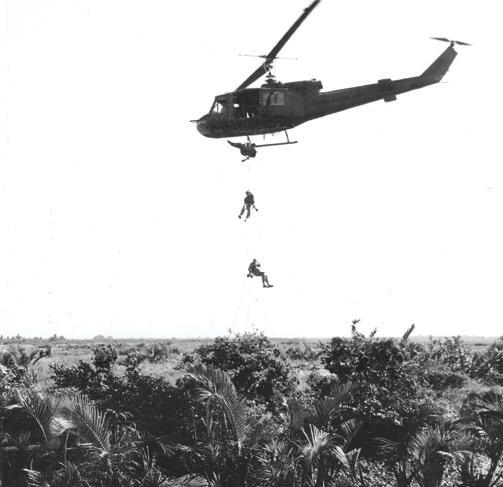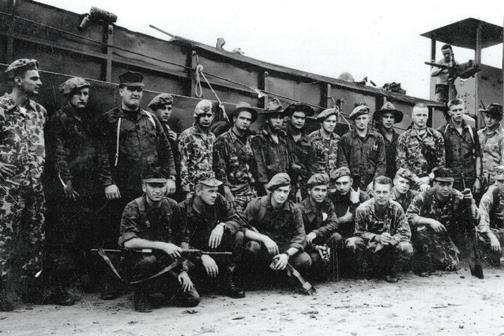
2 minute read
MILITARY
Symbol of readiness
Navy SEAL special operations force turns 60
Advertisement
By DON CRAWFORD
Navy SEALs, the special operations force known for direct raids, reconnaissance missions and strikes against terrorists, are marking their 60th anniversary this month. The elite unit was established on Jan. 1, 1962, and SEAL Team ONE was formed with men from the West Coast Underwater Demolition Teams based in Coronado.
The history of SEALs can be traced to World War II, particularly the naval combat demolition units and the underwater demolition teams. The first Underwater Demolition Teams (UDT) originated on Oahu’s windward coast at Waimanalo.
Known as “frogmen,” team members were assigned to conduct hydrographic reconnaissance and destroy obstacles on enemy beaches ahead of amphibious landings.
Those missions continued during the Korean War, but teams were also deployed inland for demolition raids to disrupt transportation lines and clear mines in harbors.
When the SEALs formed in 1962, they were named after the surroundings they operated in: sea, air, and land.
For the past 60 years, the elite SEAL team members have operated mostly in obscurity. Only recently have they come under the national spotlight, especially after killing Osama bin Laden during the raid at Abbottabad, Pakistan in May 2011.
The idea for SEALs took shape in September 1960 with the insurgency of the Viet Cong in South Vietnam. Chief of Naval Operations Adm. Arleigh A. Burke directed Vice Adm. Wallace M. Beakley, the deputy chief of Naval Operations (Fleet Operations and Readiness), to study the Navy’s options with respect to unconventional warfare.
An Unconventional Activities Working Group was formally established on Sept. 13, 1960, and directed to investigate
“naval unconventional activity methods, techniques and concepts, which may be employed effectively against Sino-Soviet interests under conditions of cold war.”
The committee recommended “additional unconventional warfare capabilities within, or as an extension of our amphibious forces” and emphasized operations conducted in “restricted waters.”
A memorandum to Beakley on May 13, 1961, “proposed formation of special operations teams to suppress enemy guerrilla activities and resupply in riverine environments. These teams would be equipped and trained to conduct clandestine missions in support of Naval operations.”
At the same time, President John Kennedy stressed the necessity for increasing guerrilla warfare training of foreign as well as U.S. forces. Kennedy was pushing the services hard to develop an unconventional warfare capability.
By November 1961, a team of UDT and Fleet officers produced the final plan approved by the Chief of Naval Operations for the establishment of SEAL teams. On Dec. 11, 1961, two SEAL teams, effective January 1962, were authorized.
On Jan. 1, 1962, Lt. David Del Giudice, the first Commanding Officer of SEAL Team ONE, released a message reporting SEAL Team ONE ready for duty.
Don Crawford is a retired Navy SEAL.
U.S. NAVY NATIONAL MUSEUM OF NAVAL AVIATION /WIKIMEDIA COMMONS Navy SEALs rappel down ropes from a U.S. Army Bell UH-1B Iroquois helicopter to set an ambush in South Vietnam on March 13, 1967.

NATIONAL NAVY UDT-SEAL MUSEUM
SEAL Team One at Nha Be, Vietnam, in 1966. Radarman Billy Machen (third from left, front row) was the first SEAL killed in action in Vietnam.






